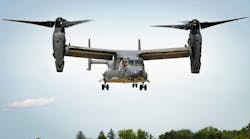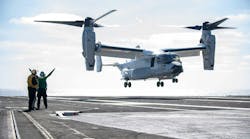WASHINGTON, April 22, 2013 /PRNewswire-iReach/ -- The American Helicopter Services And Aerial Firefighting Association (AHSAFA) has questioned a proposal by the Colorado Senate to establish a state-owned and operated aerial firefighting fleet. The legislation, which would establish a Colorado Firefighting Air Corps, at a purported cost of $25 million, has been approved by the Senate's Agricultural, Natural Resources and Energy Committee but funding has not been approved by the Senate Appropriation Committee.
"A privately operated fleet of fixed wing air tankers and helicopters is a far more cost effective option than a publicly funded state agency, which would incur huge start-up costs, and even larger, ongoing funding commitments to support the aircraft and staffing infrastructure required to sustain an effective aerial firefighting operation," said Tom Eversole, AHSAFA Executive Director in Washington. "That infrastructure already exists in the private sector, which has consistently demonstrated it can provide aerial firefighting services at less cost, and with greater efficiency than government agencies, which should be supporting--not competing with--private industry."
According to Dan Snyder, Chief Operating Officer of Neptune Aviation Services in Missoula, Montana, aerial firefighting is a complex, "labor-, facilities-, and equipment-intensive" business that would be a "questionable investment" as a government operation.
"You are not only talking about the aircraft, but the storage and maintenance hangars, tooling, ground support vehicles; as well as salaries and benefits for pilots, dispatchers, mechanics, and fuel truck drivers. There are also training costs involved," Snyder explained.
He added that for large air tankers, there is no generic, one-size-fits-all fire retardant tanking and delivery system--a modification that could take years to design and certify.
If Colorado opts to establish a state-owned aerial firefighting operation, it is likely that they would be looking at acquiring surplus military aircraft, said Todd Petersen, Vice-President Marketing for Columbia Helicopters in Portland Oregon.
"That would require the additional expense of totally refurbishing the airplanes, and modifying them specifically for aerial firefighting," he explained. "That means they would have to develop and certify internal tanks and the delivery system, or modifying the aircraft to work with external buckets."
Petersen added that when using private operators, the state would have the advantage of "utilizing highly trained professional crews from the outset."
Robin Rogers, Vice President of Rogers Helicopters in Fresno, California, pointed out that a government owned and operated aerial firefighting enterprise would not be just seasonal, in terms of staffing requirements.
"You'd have to offer year-round employment for your pilots, mechanics and other staff on the payroll," he said. "When you consider salaries, benefits, insurance, and maintenance, that gets very expensive. However, when the Federal or a state government puts an operator on contract, they only pay for the duration of that contract, which could be as little as a few months, depending on the length of the fire season."
Addressing concerns about the lack of available aircraft, Rogers said that commercially operated helicopters are, in fact, ready for deployment. "If you put out a contract, the private sector would make them available. That not only includes helicopters that are specifically modified for fire fighting, but also the standard category helicopters that are certified to move crews to and from the fires."
Kristin Edwards, Vice President Sales, for Air Tractor, Inc. reported that she has "seen the success, which states such as Colorado and Idaho have had, by providing exclusive use contracts for private operators." Based in Olney, Texas, Air Tractor builds the AT-802F, a widely used, fixed-wing, single engine, turboprop air tanker.
"By working with the private sector, the state gets a reliable aerial firefighting asset that it can control," Edwards explained. "If states increased the number of contracts to private enterprise for aerial firefighting, it would provide an incentive for operators to put these airplanes on the contracts, assuring an adequate number of assets for the states, to be used for fire protection."
Air Tractor, Inc., Columbia Helicopters, Neptune Aviation Services, and Rogers Helicopters are members of AHSAFA, the Washington-based trade association representing the commercial operators of helicopters and fixed wing aircraft engaged in aerial wildland firefighting.
Media Contact: Tom Eversole American Helicopter Services & Aerial Firefighting Association, 703040904355, [email protected]
News distributed by PR Newswire iReach: https://ireach.prnewswire.com
SOURCE American Helicopter Services & Aerial Firefighting Association



